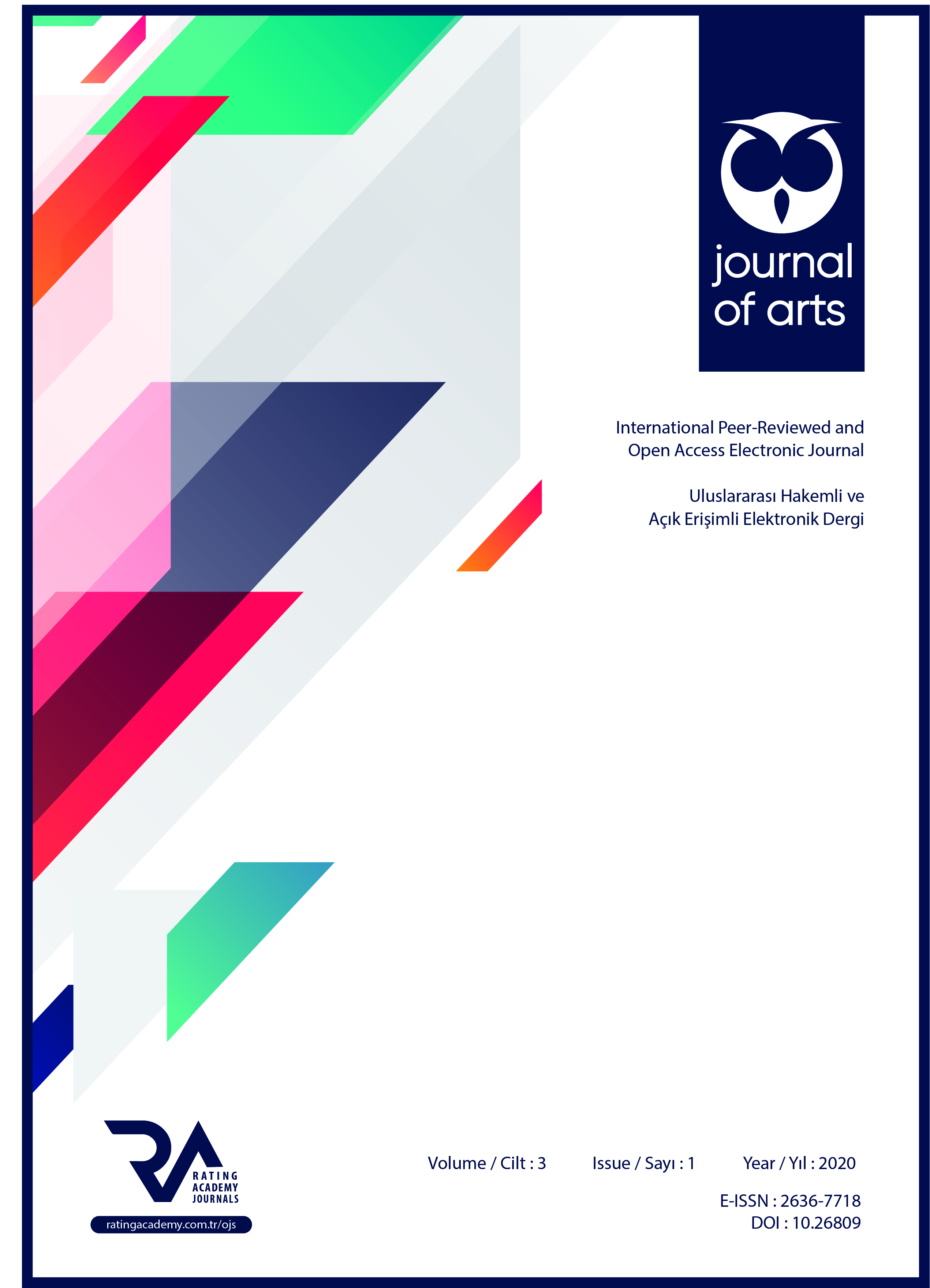A CERAMIC REPAIR TECHNIC SINKING INTO OBLIVION: RIVET
DOI:
https://doi.org/10.31566/arts.3.003Keywords:
Restoration, Ceramic, Riveting, Trational repair, Repair of porcelainAbstract
The fragile structure of the ceramic material that leads to broken ceramics in daily use, led humans to repair these objects over time. Before the use of synthetic adhesives that emerged with technological advances, metal rivets, bonds and other metal-based repair methods were among the most reliable and prevalent ceramic repair methods.
In the present study, the history of the rivet technique used in ceramic repair, the tools, material and processes commonly used in the 19th and 20th centuries during the development of this technique were investigated.
Downloads
References
BARTHELET, A., (1884), The Works of Art and Bric-à-Brac Doctor, Philadelphia.
BUYS, S. and OAKLEY, V., (2007), Conservation and Restoration of Ceramics, Oxford: Butterworth-Heinemann, 7-66-69.
CAPLE, C., (2006), Objects: Reluctant Witnesses to the Past, New York: Routledge.
DOOIJES, R., (2007), Keeping Alive the History of Restoration, Nineteenth Century Repairs on Greek Ceramics from the National Museum of Antiquities in Leiden. In: L. Pilosi, ed. Glass and Ceramics Conservation 2007, the Interim Meeting ofthe ICOM-CC Working Group, Slovenia. Paris: International Council of Museums, 103–11.
GALLAGHER, L.J., (1953), China in the Sixteenth Century, The Journals of Matthew Ricci, 1530-1610.
GARACHON, I., (2010a), Old Repairs of China and Glass, Rijksmuseum Bulletin.
GARACHON, I., (2010b), From mender to restorer: some aspects of the history of ceramic repair, New-York, USA, Interim meeting of the ICOM-CC Working group, At Corning.
GOTTESMAN, R.S., (1970), The Arts and Crafts in New York, 1726–1776. New York: Da Capo Press, 69-72.
HOWORTH, J., (1900), The Art of Repairing and Riveting Glass and China and Earthenware, London: The Pottery Gazette.
KHAZANOVA, I.A., (1981), Some Problems Concerning Repeated Restoration of Antique Painted Vases, In: ICOM Committee for Conservation 5th Triennial Meeting Zagreb, Preprints. Paris: International Council of Museums, Vol. 3, 78/21/3–6.
KOOB, S., (1998), Obsolete Fill Materials Found on Ceramics, Journal of the American Institute for Conservation, 37: 49–67.
LARNEY, J., (1971), Ceramic Restoration in the Victoria and Albert Museum, Studies in Conservation, 16: 69–72.
LELAND, C.G., 1907, A Manual of Mending and Repairing, New York: Dodd and Mead, 19-69-82.
MARIJNISSEN, R.H., (1996), The Need for a History of Restoration, In: A.M. Vaccaro, ed. Historical and Philosophical Issues in the Conservation of Cultural Heritage. Los Angeles: Getty Conservation Institute, 275–280.
MASON, G.H., (1800), The Costume of China, London: Miller. Mora, P., Mora, L. & Philippot, P. 1996. Problems of Presentation. In: A.M. Vaccaro, ed. Historical and Philosophical Issues in the Conservation of Cultural Heritage. Los Angeles: Getty Conservation Institute, 343–54.
OMNÈS, O., (2002), Du raccommodeur au conservateurrestaurateur: Une approche de l’histoire de la restauration de la céramique, Techné, no. 16, 109–112.
PARSONS, C.S.M., and CURL, F.H., 1963, China Mending and Restoration, London: Faber and Faber, 47-57.
PODANY, J., (1994), Faked, Frayed or Fractured Development of Loss- Compensation Approaches for Antiques at the J. Paul Getty Museum, In: E. Pearlstein & M. Marincola, eds. Loss Compensation: Technical and Philosophical Issues. Tennessee: American Institute for Conservation, 38–56.
PORTELL, J.P., (2003), Prior Repairs: When Should They be Preserved, Journal of the American Institute of Conservation, 42: 363–80.
RIEGL, A., 1996. The Modern Cult of Monuments: Its Essence and its Development, In: A.M. Vaccaro, ed. Historical and Philosophical Issues in the Conservation of Cultural Heritage. Los Angeles: Getty Conservation Institute, 69–83.
RIS-PAQUOT, O.E., (1872), Manière de Restauer Soi-même les Faïnces, Porcelaines,Cristeux, http://www.archive.org/stream/manirederestaur00risgoog#page/n7/mode/1up,(accessed 19/09/19).
SAVAGE, G., (1954), The Art and Antique Restorers’ Handbook, London: Rockliff.
SCHINZEL, H., (1999), Restoration – a Kaleidoscope through History, In: A. Oddy & S. Carroll, eds. Reversibility: Does it Exist? British Museum Occasional Paper. London: BritishMuseum, 43–45.
THÉVENOT, M. and MOETTE, T., (1666), Relations de divers voyages curieux qui n’ont point été publiées, part iii, Paris, 205.
THORNTON, J., (1998), A brief history and review of the early practice and materials of gap-filling in the west, Journal of the American Institute of Conservation, 37: 3–22.
VACCARO, A.M., (1996), The Emergence of Modern Conservation Theory, In: A.M. Vaccaro, ed. Historical and Philosophical Issues in the Conservation of Cultural Heritage. Los Angeles: Getty Conservation Institute, 203–5.
VAN DE WETERING, E., (1996), The Surface of Objects and Museum Style, In: A.M. Vaccaro, ed. Historical and Philosophical Issues in the Conservation of Cultural Heritage. Los Angeles: Getty Conservation Institute, 415–22.
WILLIAMS, N., (1983), Porcelain: Repair and Restoration, London: British Museum Publications, 12-21.
WILLIAMS, N., (1988), Ancient Methods of Repairing Pottery and Porcelain, In: V. Daniels, ed. Early Advances in Conservation. London: British Museum, 47–49.
Additional Files
Published
How to Cite
Issue
Section
License
When the article is accepted for publication in the Journal of Arts, authors transfer all copyright in the article to the Rating Academy Ar-Ge Yazılım Yayıncılık Eğitim Danışmanlık ve Organizasyon Ticaret Ltd. Şti.The authors reserve all proprietary right other than copyright, such as patent rights.
Everyone who is listed as an author in this article should have made a substantial, direct, intellectual contribution to the work and should take public responsibility for it.
This paper contains works that have not previously published or not under consideration for publication in other journals.









